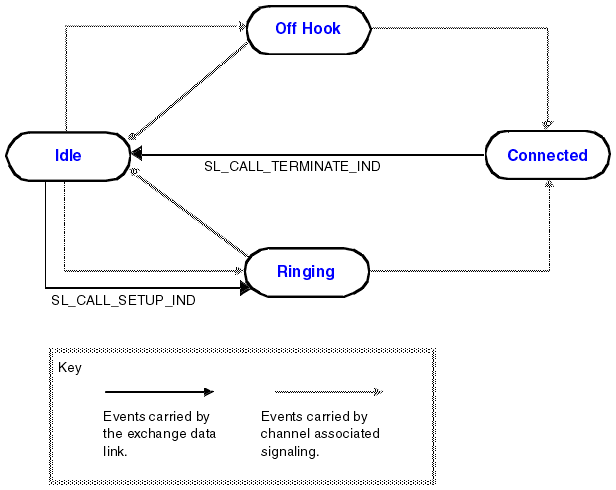Exchange data link signaling processes are responsible for only some of the signaling information for a trunk. Typical exchange data link protocols provide call information, or hangup detection, or both. Therefore the signaling model as seen by the signaling process is much simpler than that required for common channel signaling.

See Call transfer model for details of how a Blueworx Voice Response signaling process implements call transfer. See Message waiting indicator for details of how a Blueworx Voice Response signaling process implements message waiting indicators.
Call information
Call information can include one or more of the following:
- The telephone number of the caller (calling number)
- The dialed number (or called number)
- The origin of the call (for example, an external call)
- The call type (for example, a call forwarded unconditionally to Blueworx Voice Response)
- The signaling process specific information (two strings up to 32 characters in length are allowed)
If the exchange data link signaling process is able to provide call information, then the signaling process is expected to specify this when it opens the signaling interface. When call information is available, the signaling process should report it to the signaling interface by sending an SL_CALL_SETUP_IND primitive. This is in addition to information received over the channel associated signaling trunk.
Hangup
If the exchange data link signaling process is able to provide reliable hangup detection, then it is expected to specify this when it opens the signaling interface. When hangup is detected for a call, the signaling process should report it to the signaling interface by sending a SL_CALL_TERMINATE_IND primitive. The signaling process is the definitive source of this information.